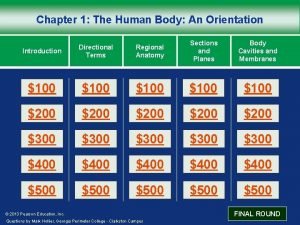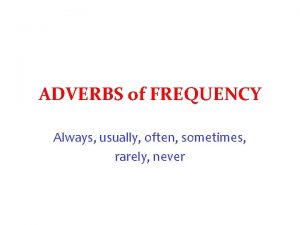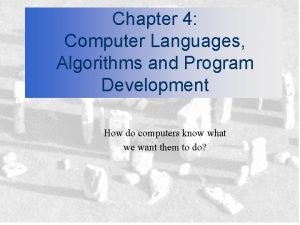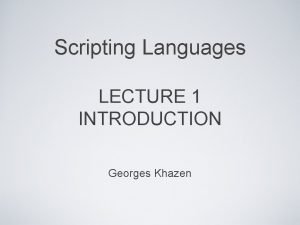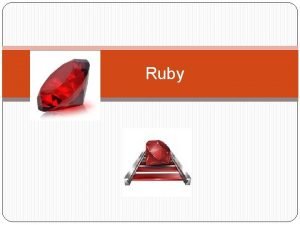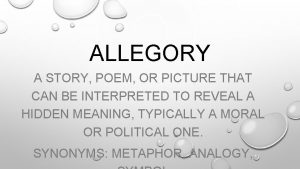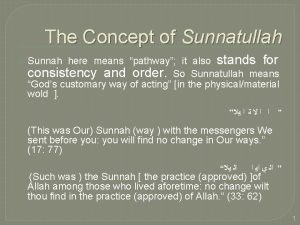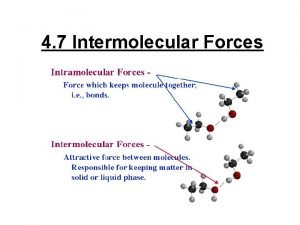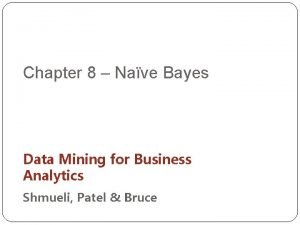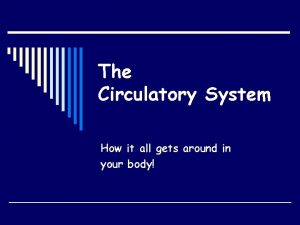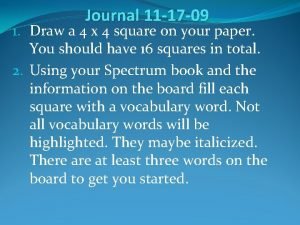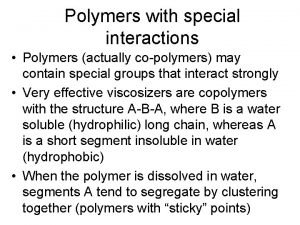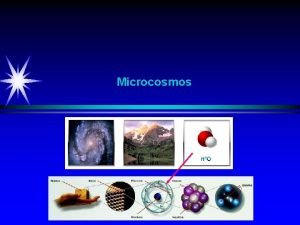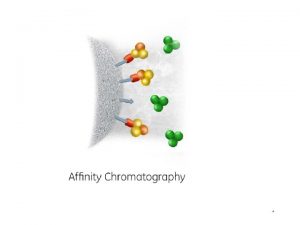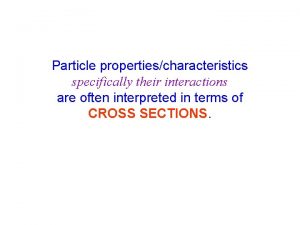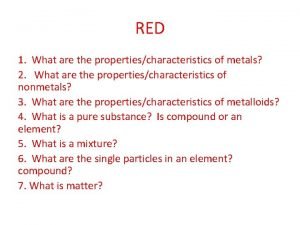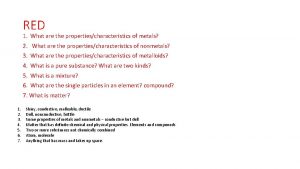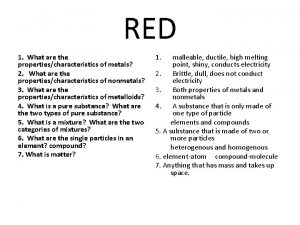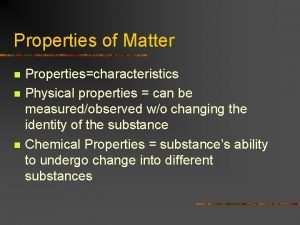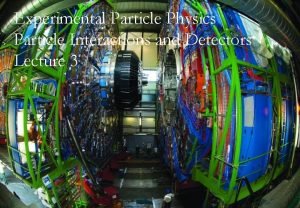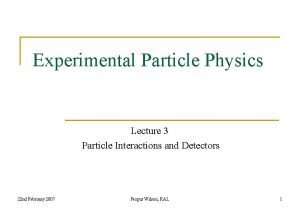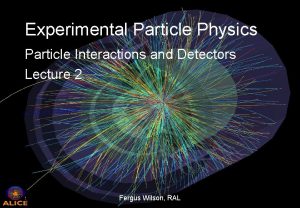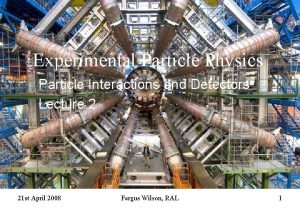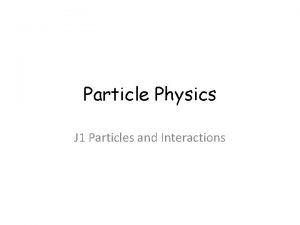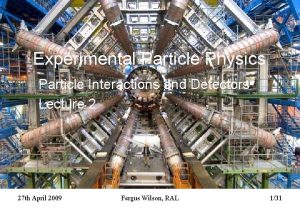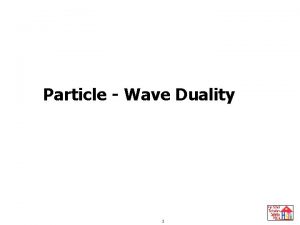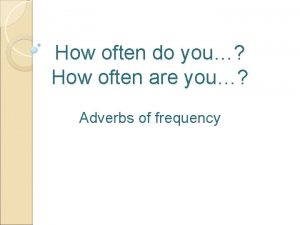Particle propertiescharacteristics specifically their interactions are often interpreted




![[ 20 10 Ne]* [ 20 10 Ne]*](https://slidetodoc.com/presentation_image/2e92a784f0e1482a31972bfb9d45faf4/image-5.jpg)
































![bg Muon momentum [Ge. V/c] Particle Data Group, R. M. Barnett et al. , bg Muon momentum [Ge. V/c] Particle Data Group, R. M. Barnett et al. ,](https://slidetodoc.com/presentation_image/2e92a784f0e1482a31972bfb9d45faf4/image-38.jpg)

- Slides: 39

Particle properties/characteristics specifically their interactions are often interpreted in terms of CROSS SECTIONS.

For elastically scattered projectiles: Ef , pf Ei , pi EN , p. N The recoiling particles are identical to the incoming particles but are in different quantum states The initial conditions may be precisely The simple 2 -body kinematics of scattering knowable fixes the energy of particles scattered through . only classically!

Nuclear Reactions Besides his famous scattering of particles off gold and lead foil, Rutherford observed the transmutation: or, if you prefer Whenever energetic particles (from a nuclear reactor or an accelerator) irradiate matter there is the possibility of a nuclear reaction

Classification of Nuclear Reactions • inelastic scattering individual collisions between the incoming projectile and a single target nucleon; the incident particle emerges with reduced energy • pickup reactions incident projectile collects additional nucleons from the target 16 O + d 158 O + 31 H (d, 3 H) 8 Ca + 32 He 40 Ca + 20 41 20 (3 He, ) • stripping reactions incident projectile leaves one or more nucleons behind in the target 90 91 (d, p) 40 Zr + d 40 Zr + p 3 He, d) 23 3 24 ( 11 Na + 2 He 12 Mg + d
![20 10 Ne [ 20 10 Ne]*](https://slidetodoc.com/presentation_image/2e92a784f0e1482a31972bfb9d45faf4/image-5.jpg)
[ 20 10 Ne]*

The cross section is defined by the ratio rate particles are scattered out of beam rate of particles focused onto target material/unit area a “counting” experiment notice it yields a measure, in units of area number of scattered particles/sec incident particles/(unit area sec) target site density how tightly focused or intense the beam is density of nuclear targets With a detector fixed to record data from a particular location , we measure the “differential” cross section: d /d.

Incident mono-energetic beam v t scattered particles A d N = number density in beam (particles per unit volume) N number of scattering centers in target intercepted by beamspot Solid angle d represents detector counting the d. N particles per unit time that scatter through into d FLUX = # of particles crossing through unit cross section per sec = Nv t A / t A = Nv Notice: q. Nv we call current, I, measured in Coulombs. d. N N F d. W d. N = s( )N F d W d. N = N F d s

d. N = FN s( )d W N F d s(q) the “differential” cross section R R R

the differential solid angle d for integration is sin d R Rsin d Rd Rsin Rd

Symmetry arguments allow us to immediately integrate out and consider rings defined by alone R Rsin d R R R Integrated over all solid angles Nscattered = N F ds TOTAL

The scattering rate Nscattered = N F ds TOTAL per unit time Particles IN (per unit time) = F Area(of beam spot) Particles scattered OUT (per unit time) = F Ns TOTAL

Earth Moon

Earth Moon

for some sense of spacing consider the ratio orbital diameters central body diameter ~ 10 s for moons/planets ~100 s for planets orbiting sun In a solid • interatomic spacing: 1 -5 Å (1 -5 10 -10 m) • nuclear radii: 1. 5 -5 Å (1. 5 -5 10 -15 m) the ratio orbital diameters ~ 66, 666 for atomic electron central body diameter orbitals to their own nucleus Carbon Oxygen Aluminum Iron Copper Lead 6 C 8 O 13 Al 26 Fe 29 Cu 82 Pb

A solid sheet of lead offers how much of a (cross sectional) physical target (and how much empty space) to a subatomic projectile? 207 Pb 82 w Number density, n: number of individual atoms (or scattering centers!) per unit volume n= NA / A where NA = Avogadro’s Number A = atomic weight (g) = density (g/cc) n= (11. 3 g/cc)(6. 02 1023/mole)/(207. 2 g/mole) = 3. 28 1022/cm 3

207 Pb 82 w For a thin enough layer n (Volume) (atomic cross section) = n (surface area w)(pr 2) as a fraction of the target’s area: = n (w)p(5 10 -13 cm)2 For 1 mm sheet of lead: 1 cm sheet of lead: 0. 00257 0. 0257

Actually a projectile “sees” nw nuclei per unit area but Znw electrons per unit area!


that general description of cross section let’s augmented with the specific example of Coulomb scattering

q 1 q 2 BOTH target and projectile will move in response to the forces between them. Recoil of target q 1 But here we are interested only in the scattered projectile


impact parameter, b

b q 2 d A beam of N incident particles strike a (thin foil) target. The beam spot (cross section of the beam) illuminates n scattering centers. If d. N counts the average number of particles scattered between and d using d. N/N = n d d = 2 b db becomes:

b q 2 d and so

b q 2 d

What about the ENERGY LOST in the collision? • the recoiling target carries energy • some of the projectile’s energy was surrendered • if the target is heavy • the recoil is small • the energy loss is insignificant Reminder: 1/ (3672 Z)

mvf mv 0 mvf ( (mv) = - mv 0 recoil momentum of target ) • large impact parameter b For small scattering ( ) and/or • large projectile speed v 0 vf vo

mvf /2 mv 0 Together with: Recognizing that all charges are simple multiples of the fundamental unit of the electron charge e, we write q 1 = Z 1 e q 2 = Z 2 e p

Recalling that kinetic energy K = ½mv 2 = (mv)2/(2 m) the transmitted kinetic energy (the energy lost in collision to the target) K = ( p)2/(2 mtarget)

Z 2≡Atomic Number, the number of protons (or electrons) q 2=Z 2 e q 1=Z 1 e

For nuclear collisions: mtarget 2 Z 2 mproton For collisions with atomic electrons: mtarget melectron q 1 = e

For nuclear collisions: mtarget 2 Z 2 mproton For collisions with atomic electrons: mtarget melectron q 1 = e Z 2 times as many of these occur!

mproton = 0. 000 000 001 6748 kg melectron = 0. 000 000 0009 kg The energy loss due to collisions with electrons is GREATER by a factor of

Notice this simple approximation shows that Why are a-particles “more ionizing” than b-particles?

energy loss speed

the probability that a particle, entering a target volume with energy E “collides” within and loses an amount of energy between E' and E' + d. E' P (E, E' ) d. E' dx ( 2 pb db ) ( dx NA Z/A ) Or P (E, E' ) d. E' dx = P 1 / (E')2

-d. E/dx = (4 p. Noz 2 e 4/mev 2)(Z/A)[ln{2 mev 2/I(1 -b 2)}-b 2] I = mean excitation (ionization) potential of atoms in target ~ Z 10 Ge. V Felix Bloch 103 Hans Bethe Range of d. E/dx for proton through various materials d. E/dx ~ 1/b 2 102 H 2 gas target 101 Pb target Logarithmic rise 100 101 102 E (Me. V) 104 105 106
![bg Muon momentum Ge Vc Particle Data Group R M Barnett et al bg Muon momentum [Ge. V/c] Particle Data Group, R. M. Barnett et al. ,](https://slidetodoc.com/presentation_image/2e92a784f0e1482a31972bfb9d45faf4/image-38.jpg)
bg Muon momentum [Ge. V/c] Particle Data Group, R. M. Barnett et al. , Phys. Rev. D 54 (1996) 1; Eur. Phys. J. C 3 (1998)

D. R. Nygren, J. N. Marx, Physics Today 31 (1978) 46 d. E/dx(ke. V/cm) m p a p d e Momentum [Ge. V/c]
 Insidan region jh
Insidan region jh A broken hallux refers specifically to a broken
A broken hallux refers specifically to a broken Always often usually sometimes rarely never
Always often usually sometimes rarely never Businesses often call their stores and warehouses
Businesses often call their stores and warehouses In the business world, people are often measured by their:
In the business world, people are often measured by their: Are shell scripts compiled or interpreted
Are shell scripts compiled or interpreted Interpreted vs compiled language
Interpreted vs compiled language “interpreted vs compiled language”
“interpreted vs compiled language” Strongly typed scripting language
Strongly typed scripting language Css comprises of style rules that are interpreted
Css comprises of style rules that are interpreted Deaths in civil war
Deaths in civil war Rb programming language
Rb programming language Visual allegory examples
Visual allegory examples Concept of sunnatullah
Concept of sunnatullah Elysian prospects meaning
Elysian prospects meaning Romeo.and juliet prologue
Romeo.and juliet prologue Interspecific competition definition
Interspecific competition definition Chapter 5 evolution and community ecology
Chapter 5 evolution and community ecology Intermolecular force
Intermolecular force Commensalism in science definition
Commensalism in science definition Naive bayes pays attention to complex interactions and
Naive bayes pays attention to complex interactions and Parasitism
Parasitism Circulatory system interactions with other systems
Circulatory system interactions with other systems Wave interactions
Wave interactions Insight therapies involve verbal interactions
Insight therapies involve verbal interactions The properties and interactions of magnets are called
The properties and interactions of magnets are called Niches and community interactions
Niches and community interactions Noncovalent interactions
Noncovalent interactions Chapter 22 reaching out cross-cultural interactions
Chapter 22 reaching out cross-cultural interactions Special interactions
Special interactions Microcosmos macrocosmos
Microcosmos macrocosmos Factors influencing effective communication
Factors influencing effective communication Dna-protein interactions
Dna-protein interactions Sphere interactions
Sphere interactions 6.1 habitats, niches, and species interactions answer key
6.1 habitats, niches, and species interactions answer key Protein binding interactions
Protein binding interactions Qualitative quantitative
Qualitative quantitative Molecular biology
Molecular biology Protein binding interactions
Protein binding interactions Chapter 22 reaching out cross-cultural interactions
Chapter 22 reaching out cross-cultural interactions

